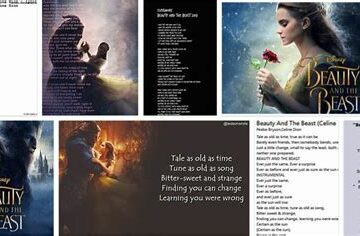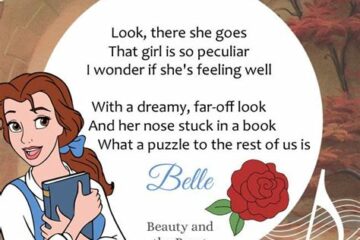Comparing Beauty And The Beast Adaptations Across Different Mediums

Comparing Beauty And The Beast Adaptations Across Different Mediums
Historical Context Of Beauty And The Beast Adaptations
The story of Beauty and the Beast has traversed through various epochs and cultures, evolving significantly over time. Originally derived from a folktale, the narrative was popularized by French novelist Gabrielle-Suzanne Barbot de Villeneuve in the early 18th century. It was later abridged and rewritten by Jeanne-Marie Leprince de Beaumont, whose version, published in 1756, gained remarkable traction and became the benchmark for future adaptations.
In the 19th and 20th centuries, Comparing Beauty across adaptations took on a new dimension as interest in folklore surged. The tale was integrated into literary studies and theatrical performances, giving rise to various interpretations around the world. Notably, the original themes of love, redemption, and inner beauty resonated with audiences, prompting adaptations in film, theater, and literature. This trend continued throughout the 20th century as animation and live-action productions began to flourish.
The 1991 animated film from Disney marked a significant cultural moment, solidifying Beauty and the Beast as a quintessential fairy tale in Western media. This version, praised for its musical score and character development, reintroduced the narrative to a new generation and established benchmarks for storytelling in animation. Furthermore, as international audiences engaged with the narrative, adaptations began to reflect diverse cultural perspectives, showcasing how different societies interpret the core themes of the story.
As we delve deeper into the timeline, it is evident that each interpretation sheds light on the societal norms and values of its time, making Comparing Beauty across these adaptations not just a study of narrative but also a reflection of historical evolution and cultural change.
Key Themes In Different Beauty And The Beast Versions
Throughout various adaptations of Beauty and the Beast, certain key themes consistently emerge, emphasizing the universal truths embedded in the story. Central to these adaptations is the theme of comparing beauty and the notion that true beauty lies within. Regardless of whether we are looking at the traditional fairy tale, animated films, or live-action versions, the evolving understanding of beauty is a common thread that captivates audiences.
One of the primary themes is the transformative power of love. Each version explores how love can change individuals, redirecting their paths and perceptions of self-worth. The Beast’s journey from isolation to acceptance highlights the potential for growth through compassion and understanding, often contrasting with societal judgments based solely on appearances.
Another prevalent theme is the clash between societal expectations and individual desires. Various adaptations showcase characters who struggle with the pressures to conform to societal norms, often leading them to challenge preconceived notions about beauty and worth. Belle, for instance, embodies the idea of self-acceptance and choosing personal happiness over societal approval, setting herself apart from the narrow definitions of beauty in her world.
Additionally, the theme of redemption plays a crucial role in the narrative. The Beast’s character arc is a classic example of redemption; his journey illustrates that past actions do not define one’s future. This theme is echoed in many adaptations, reinforcing that everyone possesses the capacity for change, aligning with the deeper moral lessons of the story about forgiveness and understanding.
As adaptations continue to evolve, the exploration of these themes provides fresh perspectives on the idea of comparing beauty, allowing audiences to reflect on their values and beliefs about love, identity, and transformation in different cultural contexts.
Visual Differences In Comparing Beauty Across Mediums
When comparing beauty in the various adaptations of Beauty and the Beast, it is essential to acknowledge how different mediums capture the visual essence of the story. From animated films to live-action adaptations, each interpretation brings unique aesthetics that reflect not only the narrative but also the cultural contexts of their times.
In animated versions, such as Disney’s iconic 1991 film, vibrant colors, exaggerated features, and whimsical designs create a magical ambiance that appeals to audiences of all ages. The animation allows for fantastical elements, such as talking furniture and enchanted objects, to be portrayed in a way that feels both accessible and imaginative.
Conversely, live-action adaptations, like the 2017 Disney film, often aim for a more realistic portrayal of characters and settings. This shift in visual representation can manifest in the detailed costumes and sets that evoke historical accuracy and depth. However, this approach may result in a different emotional experience, as the heightened realism can ground the story in a more relatable, albeit less whimsical, context.
Furthermore, stage adaptations showcase their own unique interpretations, utilizing lighting, set designs, and props to convey the enchanting world of Beauty and the Beast. Productions vary widely in how they visually express the transformation of both the Beast and Belle, often relying heavily on the creativity of the director and the resources available to the theater.
Notably, the visual differences also extend to cultural interpretations across geographical boundaries. For instance, adaptations from different countries may introduce localized art styles, settings, and character designs, enhancing the cultural relevance and resonance of the story. Thus, comparing beauty across these visual portrayals highlights not only the artistic choices made but also the broader cultural narratives intertwined with them.
The visual representations in comparing beauty in different adaptations of Beauty and the Beast reveal much about the story’s adaptability and the varying artistic expressions that continue to captivate audiences worldwide.
Cultural Impact Of Beauty And The Beast Adaptations
The story of Comparing Beauty and the Beast has transcended its origins, evolving into an iconic tale that resonates deeply across various cultures and societies. Each adaptation has contributed to the collective understanding and interpretation of beauty, love, and sacrifice, showcasing how cultural contexts influence storytelling.
In literature and film, adaptations have often reflected the social values of their times. For instance, the original fairy tale from the 18th century emphasized themes of moral integrity and the idea that true beauty lies within. This message has been interpreted differently in various adaptations, showcasing changing attitudes towards gender roles and relationships.
Disney’s animated version not only popularized the tale but also infused it with modern sensibilities, emphasizing female autonomy and personal growth. The enchanting music and vibrant animation introduced a new generation to the story, highlighting a cultural shift towards appreciating diverse forms of beauty and individual empowerment.
Moreover, live-action adaptations have continued to push boundaries by incorporating contemporary themes. For example, the 2017 film reimagined the characters and storylines to reflect the importance of consent and emotional intelligence in relationships, thus impacting audience perceptions of love and connection.
Furthermore, Comparing Beauty across different cultural landscapes reveals how regional adaptations often adapt themes unique to their heritage, demonstrating the global reach of the narrative. From the 1946 French film to the recent live-action renditions, each version serves not only as entertainment but also as a cultural commentary that resonates with its audience’s identity and values.
The cultural impact of Beauty And The Beast adaptations has been significant, as they invite audiences to reflect on their contexts and challenge conventional notions of beauty and love.
Audience Reception: Comparing Beauty Through Reviews And Ratings
The various adaptations of Comparing Beauty and the Beast have evoked a wide range of responses from audiences and critics alike. Each version has been subject to scrutiny, with reviews often highlighting differences in storytelling, character development, and visual aesthetics.
In the realm of animated films, Disney’s 1991 animated classic received immediate acclaim, with critics praising its artistic animation and memorable music. It was hailed as a turning point in family entertainment, achieving a rare balance between commercial success and critical recognition. The film won multiple Academy Awards and was the first animated feature to be nominated for Best Picture, reflecting its higher reception compared to earlier adaptations.
On the other hand, the 2017 live-action adaptation received mixed reviews, with some applauding its efforts to modernize the story and introduce deeper character backgrounds, while others criticized it for lacking the charm and spontaneity of the original animated version. Audience ratings on platforms like Rotten Tomatoes and IMDb showcased this division, where nostalgia played a significant role in shaping viewer preferences.
In theater adaptations, productions such as the Broadway musical have garnered positive reception for their elaborate staging and vocal performances. Critics have noted that the live elements bring a unique energy to the story, which resonates differently compared to screen versions, highlighting the versatility of the Comparing Beauty narrative in diverse formats.
Furthermore, international adaptations tend to vary in audience reception, influencing how beauty and monstrousness are perceived culturally. For example, adaptations from different cultures may incorporate local folklore elements, leading to distinct interpretations that are either embraced or rejected by respective audiences.
Overall, audience reception continues to be a dynamic aspect of Comparing Beauty and the Beast adaptations, with new versions igniting conversations about fidelity to the source material versus creative liberties, ultimately shaping the legacy and enduring appeal of this timeless tale.
Top 10 Disney Characters You Didn’t Know About
December 30, 2024A Deep Dive Into Disney Princesses And Their Stories
December 29, 2024The Meaning Behind Beauty And Beast Lyrics
December 29, 2024Why Beauty And The Beast Is A Timeless Disney Classic
December 29, 2024The Role Of Disney Princesses In Modern Culture
December 29, 2024Exploring The Themes In Beauty And The Beast Lyrics
December 28, 2024
Leave a reply Cancel reply
Recommended
-
Merchandising Magic: How Beauty And The Beast Became A Brand
December 6, 2024 -
Beauty and the Beast – If I Can’t Love Her Lyrics
July 13, 2021 -
The Impact of Beauty and the Beast Cartoon on Pop Culture
September 26, 2023









